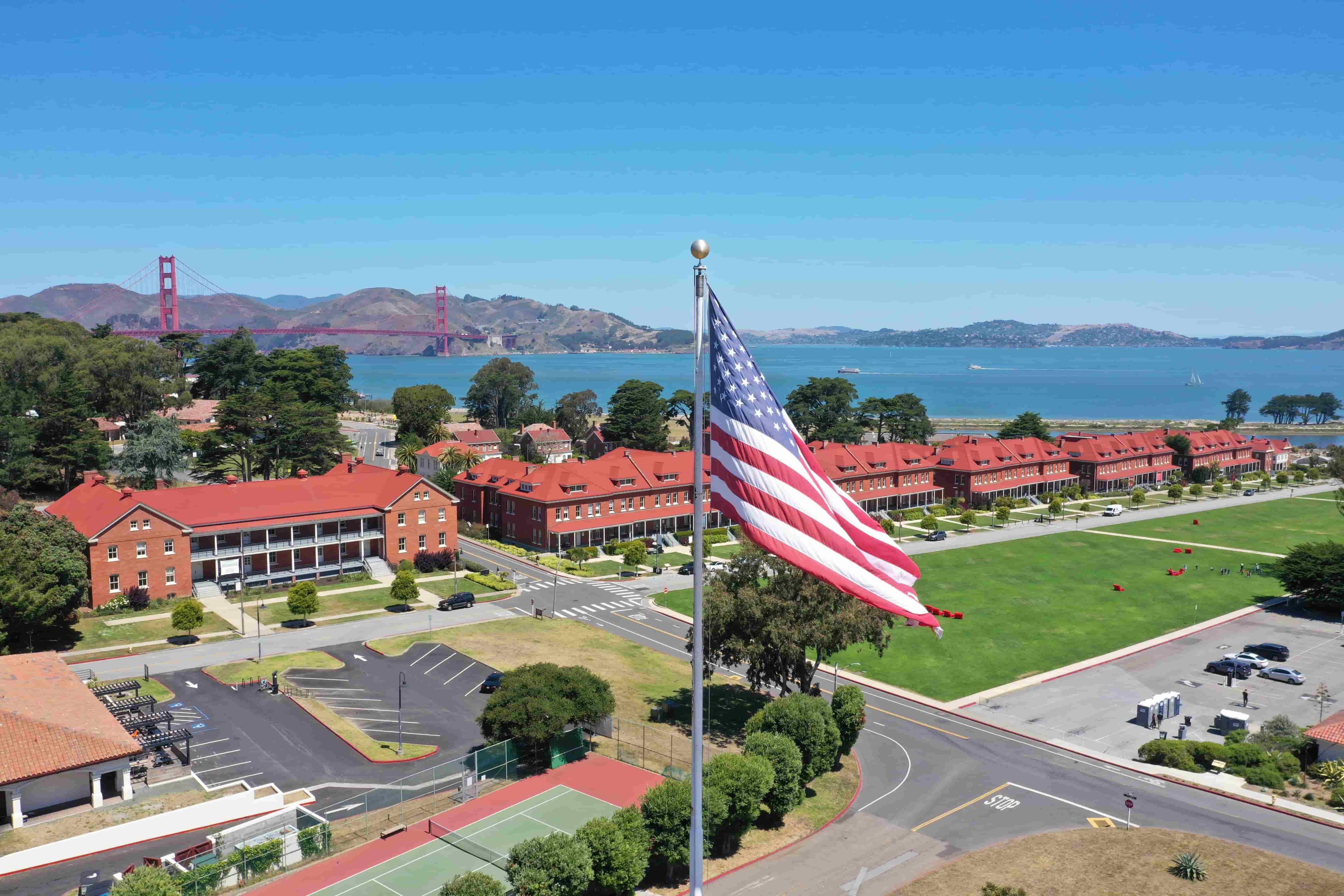Teeing It Up at the Presidio
Presidio of San Francisco (June 23, 2009) — “A jewel of a golf course,” the late, long-time San Francisco Chronicle sports editor and columnist Art Rosenbaum wrote in his delightfully thorough history, Golf at the Presidio. “Every bit as evocative of San Francisco society as Herb Caen, cable cars and prom at the Fairmont.”
The second oldest golf course in Northern California, the Presidio Golf Course has a rich and storied history as a civilian club, an Army club and an historic Army base. For much of its 114 years, the course and its spectacular panoramic city and ocean views were restricted to members of the military and the exclusive Presidio Golf Club. That all changed in 1995 when the course opened to the general public.
Four years later, with the opening of a new clubhouse, the transition to public golf at the Presidio was complete. The clubhouse, which celebrates its 10th anniversary on June 30, was the first new building built in the Presidio after it became a national park.
The old, historic clubhouse, located just outside the Presidio gates, remains private. Though no part of that clubhouse is on federal property, it sits so close that the awning over the front walkway hangs over the boundary and a final step out places one on park grounds.
The Presidio golf course’s history is a colorful blend of military history, golf history and American culture. President Theodore Roosevelt reviewed the troops there in May of 1903. Three years later, the course was used as a refugee camp for survivors of the 1906 earthquake.
Joe DiMaggio played there. So did Babe Ruth, not to mention Bob Hope and Bing Crosby. As Rosenbaum tells it in his book, the famously reclusive DiMaggio insisted on “crack of dawn sessions so his ‘crude’ attempts at learning the game were hidden from public view.” His friend Walter Frick described DiMaggio’s game as “good off the tee, but his second shots were weak and his short game inconsistent. Now I know why he never bunted: he had no short game.”
The course has also played host to some of the greatest golfers the world has known, including Lawson Little, stamped by Golf Magazine, among others, as the greatest match player in the history of the game. Little reeled off a phenomenal 32 consecutive match-play victories in capturing back-to-back U.S. and British amateur championships in 1934 and ’35. (By comparison, Tiger Woods’ longest such streak is 18.) Little, who later added a U.S. Open title as a professional, often called his home course of the Presidio the most enjoyable he ever played.
But in 1935, the legendary Byron Nelson, who was newly wed and by his own admission unknown at the time, garnered national attention for beating Little in a match play event at the Presidio. Headlines the following day screamed “Honeymooner Beats Lawson Little.” “You had to read half the article before my name even appeared,” Nelson lamented in his 1993 book, How I Played the Game.
Built in 1895 — when Col. William M. Graham, the Presidio’s commander at the time, allowed the San Francisco Golf and Country Club to build a nine-hole course on a part of the base — the golf course is one of the contributing features to the Presidio’s National Historic Landmark status. The Presidio’s signature trees were absent in those earliest days, however, since the huge stands of eucalyptus and Monterey pine had not fully grown in. Thousands more trees were planted along the course in the 1930’s when the Works Progress Administration built a tree nursery in the Presidio.
Greens fees on the original course were just 50 cents for the nine holes. Prime tee times today run upwards of $100. The course was expanded to a full 18 holes in 1910 and redesigned and lengthened for the last time in 1921.
With all the history echoing down its fairways, it would seem impossible to overlook such a significant piece of the Presidio. Yet, according to the book Defender of the Gate, the Army discovered in 1964 that the historic course had never been added to the Presidio’s list of real property. The omission was quickly corrected: “Item 71, June 30, 1964: Golf Course, 18 holes, 149.6 acres, built 1905 (sic), ‘Found on Post.'”
The Presidio Trust was established by the United States Congress in 1996 to oversee the Presidio of San Francisco, an urban national park located at the base of the Golden Gate Bridge. The 1,500-acre site contains expansive open space and spectacular views, a 300-acre historic forest, and rare and endangered plants and wildlife. It also comprises nearly 6 million square feet of buildings, including 469 historic structures that contribute to its status as a National Historic Landmark District.
